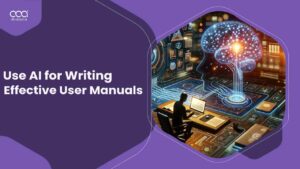The emergence of AI writing tools has revolutionized creative writing, particularly in the horror genre, by offering novel ways to overcome writer’s block and introducing unique twists to storytelling. Learning how to write horror stories with AI writing tools in India can unlock unprecedented creative potential, blending traditional horror elements with innovative narratives.
AI’s ability to process and analyze vast amounts of data can lead to the creation of gripping, spine-chilling narratives that might not have been conceivable otherwise.
In this article, I will discuss how to write horror stories using AI writing tools. I will provide a step-by-step guide along with practical examples using chatgpt so you can understand how to integerated the process in your writing journey, as well as how the best AI writing tools in India enhance the horror writing process.
How to Write Horror Stories with AI Writing Tools in India for 2024 – Step-by-Step Guide
In this guide, I’ll unveil how to write horror stories with AI writing tools in India, detailing every step necessary to craft engaging and spine-chilling narratives using the most advanced technology available.

Step 1: Setting the Foundation
Define Your Horror Theme: Start by deciding the core theme of your horror story – whether it’s a psychological thriller, supernatural, gothic, or any other sub-genre.
Initial Input to AI: Provide your chosen AI writing tool with this theme, along with any specific elements you want to include, like setting, character types, or specific horror tropes you’re interested in.
Practical example:
“I’m planning to write a horror story with a psychological thriller theme, set in an isolated mountain cabin during a blizzard. The story will involve elements of madness and the supernatural. Can you help me refine this theme and suggest specific elements or tropes that could enhance the horror aspect?”

Step 2: Generating Ideas and Outlines
Idea Generation: Use the AI to generate a range of story ideas or plot points based on your initial input. This could include potential twists, character motivations, or unique settings.
Outline Creation: From these ideas, work with the AI to create a rough outline of your story. This should include the main plot points and a basic structure for how the story will progress.
Practical example:
“Based on a psychological thriller theme set in an isolated cabin during a blizzard, involving madness and the supernatural, can you generate several story ideas or plot points that include potential twists and character motivations?”

Step 3: Developing Characters and Setting
Character Development: Input character types into the AI tool and use its suggestions to flesh out complex characters with backstories, fears, and motivations.
Setting and Atmosphere: Collaborate with the AI to develop vivid and eerie settings that enhance the horror aspect of your story.
Practical example:
“I need to develop complex characters for my horror story. Could you suggest backstories, fears, and motivations for a protagonist who is a psychologist, and a mysterious figure they encounter at the cabin?”

Step 4: Writing the First Draft
Interactive Writing: Begin writing your story, using artificial intelligence (AI) to suggest dialogue, descriptive text, and narrative progression. Engage interactively, accepting, modifying, or rejecting the AI’s suggestions.
Incorporate AI Ideas: Continuously incorporate AI-generated ideas and suggestions to enrich the story and add unexpected elements.
Practical example:
“I’m starting to write the first draft of my horror story. Can you suggest dialogue for the first encounter between the protagonist and the mysterious figure, including descriptive text that sets a tense atmosphere”

Step 5: Revising and Refining
First Revision: After completing the first draft, use the AI tool to suggest revisions. This could include tightening the plot, enhancing the horror elements, or improving character dialogue.
Manual Editing: Go through the AI-suggested revisions and apply your creative judgment to edit and refine the story, ensuring it aligns with your vision and maintains a coherent narrative flow.
Practical example:
“I’ve completed the first draft of my horror story. Can you suggest revisions to tighten the plot, enhance horror elements, and improve character dialogue”

Step 6: Finalizing the Story
Emotional and Horror Impact: Focus on maximizing the emotional and horror impact of your story. Ensure that the final draft effectively evokes the desired feelings of suspense, fear, or dread in the reader.
Final Proofreading: Perform a final proofreading, either manually or with the aid of the AI, to catch any grammatical errors or inconsistencies.
Practical example:
“Could you review my final draft and suggest ways to maximize the emotional and horror impact, ensuring it evokes suspense, fear, or dread?”

Step 7: Seeking Feedback
Share with Beta Readers: Share your story with a group of beta readers for feedback. You can use their responses to make final adjustments.
Iterative Improvement: Depending on the feedback, you may want to go through another round of revisions and edits to polish the story further.
Practical example:
“This step involves sharing your story with beta readers for feedback outside the AI’s capability, but you can ask the AI for advice on how to interpret and implement feedback.”
Step 8: Publishing Your Story
Choose a Platform: Decide where you want to publish your story – whether in a magazine, on a blog, or as part of a collection.
Submission or Posting: Follow the submission guidelines if you’re sending it to a magazine or literary journal, or format it appropriately for your chosen digital platform.
Practical example:
“I’m ready to publish my horror story. Can you suggest platforms where psychological thriller horror stories perform well and provide advice on submission or posting?”

What Is the Role of AI Writing Tools in Horror Story Writing?
Now that you know how to write horror stories with AI writing tools in India, how exactly do these tools help in the process?

In horror story writing, AI can generate eerie settings, plot twists, and even chillingly effective dialogue.
The role of AI in this context is to augment the writer’s creativity, providing a springboard for ideas that can be developed into fully fleshed-out stories. Here’s how AI plays a part in generating horror stories.
Generating Unconventional Ideas
Generative AI tools can analyze extensive literature and generate ideas that are original and unexpected. Unlike human writers, who might unconsciously lean towards familiar tropes, AI can suggest plot elements or horror concepts that break conventional boundaries, providing a fresh take on the genre.
Enhancing Atmosphere and Setting
A crucial element in horror writing is creating a suspenseful atmosphere. AI can suggest descriptions and scenarios that perfectly encapsulate eerie settings, from haunted houses to dystopian landscapes, based on its vast database of horror literature.
Expanding Character Development
AI can offer complex character backstories and psychological profiles, adding depth to the narrative. It can analyze character archetypes from various horror stories and suggest nuanced traits and motivations, making the characters more engaging and relatable.
Speeding Up the Writing Process
AI tools help generate drafts and story ideas quickly, enabling writers to produce content more efficiently. This speed is particularly beneficial in professional settings where time constraints are a factor.
Providing a Collaborative Writing Experience
AI acts as a digital muse, offering suggestions and alternatives to spark new ideas in the writer’s mind. This collaboration can lead to more dynamic and creative storytelling.
How AI Writing Tools Enhance Creative Elements in Horror Stories
AI writing tools can enhance the creative elements in horror stories in several ways:
1. Unleashing Unpredictable Twists
AI tools generate unexpected twists, tapping into vast datasets to introduce chilling narratives that surprise and engage readers with unforeseen developments.
2. Expanding the Horizon of Horror Settings and Characters
Leveraging global folklore and myths, AI creates rich, atmospheric settings and diverse characters, adding depth and cultural richness to horror stories.
3. Enhancing Atmospheric Descriptions
AI excels in crafting vivid, sensory-rich descriptions, immersing readers in the story’s ambiance and heightening the emotional impact of the narrative.
4. Generating High-Stakes Scenarios
AI constructs suspenseful, high-stakes scenarios by dynamically escalating conflicts, keeping the narrative tense and the readers captivated.
5. Innovating with Horror Subgenres
By blending elements from various horror subgenres, AI introduces innovative narratives that defy traditional boundaries, enriching the horror genre.
How To Collaborate with AI Tools in Real-Time for Horror Writing
After learning how to write horror stories with AI writing tools in India, let’s look at how humans and AI can collaborate to write enticing horror stories.
This process involves a real-time back-and-forth between the writer and the AI tool. The writer inputs initial ideas or plot points, and the machine learning tool generates suggestions and developments.
The writer can then accept, reject, or modify these suggestions, creating a dynamic and interactive flow of ideas.
Steps for Effectively Using AI in Real-Time:
- Set the Foundation: Provide the AI with basic themes, characters, or plot ideas to start the collaboration.
- Interactive Idea Development: Engage actively with the AI’s suggestions, using them as a springboard for further story development.
- Refinement and Iteration: Continuously refine the AI’s output, iterating on the narrative to enhance its quality and depth.
- Final Human Touch: Ensure that the final story retains the nuances and emotional depth that resonate with human readers, a quality that AI cannot replicate on its own.
How to Edit and Refine AI-Generated Horror Stories for Maximum Impact
AI writing tools excel not only in crafting stories but in refining and editing them too, ensuring your horror narrative aligns with your creative vision. Learn how to write horror stories with AI writing tools in India, and bring your eerie tales to life, ready for the world to experience.
Here’s how to edit and refine AI-generated horror stories for maximum impact.

Editing Techniques for AI-Generated Text
- Consistency Check: Review the AI-generated content for consistency in tone, style, and narrative flow. The horror genre relies heavily on mood, so it’s crucial that the AI’s contributions seamlessly integrate into the overall story.
- Enhance Emotional Depth: Edit the text to amplify fear, suspense, and emotional engagement. This might involve intensifying descriptive language, deepening character reactions, or heightening the story’s stakes.
Revising Horror Stories with AI Tools
- Plot Development: Use AI to brainstorm ways to strengthen the plot, such as adding twists, refining the climax, or enhancing the story’s resolution.
- Character Arc Refinement: Work with AI suggestions to develop more complex character arcs, ensuring characters evolve in a way that drives the horror narrative effectively.
What Are Some Successful Examples of Horror Stories Created with AI Writing Tools?
Example 1: Shelley: AI-Generated Horror Stories
Shelley is an AI program developed by the MIT Media Lab, named after Mary Shelley, the author of Frankenstein.
This AI was designed to write short horror stories, drawing inspiration from the subreddit r/nosleep, where users post their own horror tales.
Shelley creates narratives involving possessed dolls and other eerie entities, adding a new dimension to AI-generated fiction.
Example 2: GPT-2’s Dark Fiction
An intriguing example of AI-written horror comes from the mind of GPT-2, a language model developed by OpenAI.
This AI has a knack for generating text that can quickly turn from mundane to macabre, producing stories filled with eerie scenarios and unexpected twists.
For instance, a seemingly innocuous scene at a party might shift to reveal a ghostly figure in the moonlight, introducing a chilling turn of events.
The AI’s ability to infuse stories with a sense of foreboding and surrealism showcases its potential in crafting compelling horror fiction.
Example 3: AI-Generated Novels and Textbooks
AI’s venture into long-form content has led to the creation of entire books.
One notable example is “Dinner by Depression” by Julia Joy Raffel, an entire novel written with the aid of AI, showcasing the technology’s potential in narrative storytelling.
Although its reception suggests that AI-written literature may still have room for improvement, the experiment highlights the evolving capabilities of AI in creative writing.
What Differentiates AI-Generated Horror Stories from Traditional Writing?
AI-generated horror stories often exhibit certain characteristics that set them apart:

- Originality in Plot Development: AI’s lack of inherent bias and extensive database allow it to suggest plot developments that might be completely new to the genre.
- Data-Driven Storytelling: AI-generated stories are often grounded in a broad analysis of existing literature, making them innovative and reflective of the genre’s core elements.
- Unbiased Creativity: AI does not have personal biases, leading to the generation of ideas
FAQs
Can AI write horror stories?
Can I use AI to write a story?
Will AI replace story writers?
What is the AI that writes scary stories?
Conclusion
AI writing tools offer an exciting new frontier for horror story writing. They can enhance creativity, provide unique story elements, and serve as a collaborative partner in the writing process.
While they are not a substitute for the human touch in storytelling, AI tools certainly open up new possibilities for writers to explore the depths of horror in previously unimaginable ways.
Now that you know how to write horror stories with AI writing tools in India, you might be interested in learning how AI writing tools can help in other scenarios. Master the art of writing different topics and domains by visiting the how-to guides on allaboutai.com. Moreover, you can better understand AI terminologies and definitions by checking out our AI glossary.





